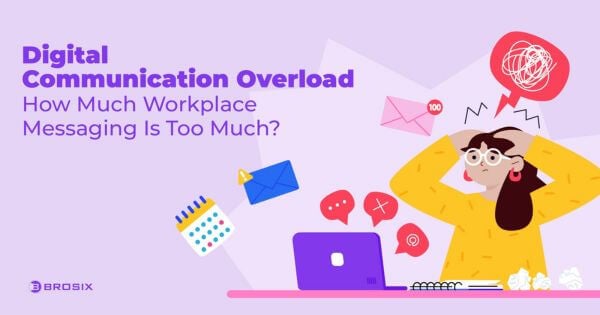Within the workplace, employees discuss countless topics each day and debate all kinds of ideas to cultivate the best solutions, which in turn deliver optimum results.
Whether they exchange thoughts and opinions through e-mails, messages, or video calls, effective internal communication lies at the heart of any successful business. Nonetheless, in many companies, it seems to be taken for granted.
Truthfully, mastering the art of communication requires so much more than uttering a few choice words. It isn’t simply information transfer done effortlessly.
However, according to the latest communication stats, 28% of employees cite poor communication as the number one reason for not being able to meet deadlines.
Getting to the bottom of some common communication myths puts businesses on the right track to foster top-notch internal communication, which can only mean success for the organization as a whole.
Let’s dive in and debunk some ubiquitous myths of communication.
Myth 1: Sent and Received Messages Are Always in Sync
While assumptions, in general, are one of the most common causes of miscommunication, the assumption that information transfer equals effective communication may be the greatest obstruction to truly fruitful communication.
Although cultural and language barriers can be a contributing factor to miscommunication, there are a host of nuanced variables to consider that influence communication’s effectiveness. For example, perceptions and emotions add to a long list of possible communication barriers.
Luckily, in real-time interactions, nonverbal and paraverbal cues, such as body language, facilitate message interpretations and often bridge the gap between what’s said and what’s perceived.
Especially with written communication, because of the lack of the previously mentioned cues, it’s imperative to encourage openness, asking for clarifications whenever necessary.
Myth 2: The More You Communicate, the Better
The key to effective communication lies in conciseness and clarity.
Information overload, which can cause employee fatigue, frustration, and overall unproductivity, should be avoided at all costs.
Think about how irritating and time-consuming it is to have to follow a never-ending email thread created because the initial information was not effectively communicated.
In our everyday work lives, especially in a remote work scenario, we often get caught up in meetings, emails, and clients’ or colleagues’ messages.
With so many messages coming from all directions, the actual time we get to focus on our specific tasks and sometimes work can almost disappear.
This is all the effect of information overload, born from the notion that more business communication is better.
Truly effective communication implies finding a productive mix of channels and messages, which is only possible once you have understood your audience.
Myth 3: The Sandwich Technique Is Effective
The sandwich technique refers to a three-step communication procedure.
Namely, it is the tactic of making negative feedback more palatable by placing the critique between two compliments or positive points to reduce its harshness and soften the blow.
This technique has increased in popularity within modern companies and is frequently used by managers nowadays in feedback sessions or performance reviews.
However, while feedback, especially when negative, should be offered constructively, it’s equally important to be addressed effectively to increase workplace productivity.
Unfortunately, the sandwich method usually scores a low success rate, frequently proving ineffective in delivering the right message clearly. Which is why it has become a common myth.
When being praised for two strong points, if the goal of the interaction is to highlight a particular area with room for improvement, employees could become misguided. Ultimately, they may end up focusing on the positive comments and completely missing the most important part—the upgrades needed.
To inspire improvement, feedback must be clear and to the point. This is paramount, as it is the only way they can identify opportunities to help them level up in that particular field.
Myth 4: An Extensive Vocabulary Is a Must for Effective Communication
Speakers’ ability to understand their audience—how they think and interact with each other—is a core influencer of effective communication.
Successful communicators always adjust their delivery to meet their audience’s needs.
For example, during an interdepartmental business meeting, for smooth collaboration, it’s recommended that participants steer clear of professional jargon and slang.
This helps the group avoid possible misunderstandings, given that people have different backgrounds and points of reference when internalizing information.
Furthermore, using pretentious words and complicated phrases is likely to hinder an effective understanding of the messages addressed, requiring extra explanations.
Given the fast-paced modern work environment, time efficiency is of the essence for productivity. This means that the longer meetings are dragged out because of ineffective communication, the less productive businesses may become.
Although straightforward vocabulary and wording may sound a bit dull in some situations, it is often the most effective way of delivering information, as demonstrated time and time again.
Final Thoughts
While the debunked communication myths above are among the most common, this is by no means an exhaustive list.
Since acknowledging popular myths and truths can help you improve your communication skills, here are a few more myths mentioned briefly:
- Communicating and listening are easy tasks
- Prior preparation ensures effective communication
- Intellectual intelligence equals good communication skills
Communication is an integral component of workplace productivity. As such, it is important to understand its challenges and limitations in order to make the most of all of your interactions.








